#oviraptorosaur
Text
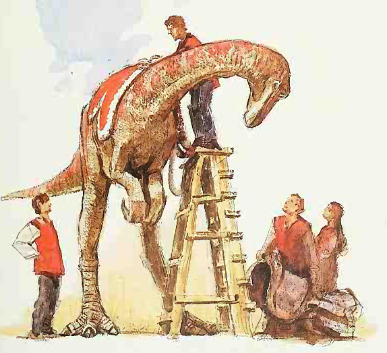

Blast from the past! Would you believe these creatures in Dinotopia are Deinocheirus? And this isn't a bad reconstruction for the time either, as this is during the long period when all we knew of Deinocheirus was a giant pair of mystery arms! I remember seeing quite a bit of paleoart of it looking like this when I was a kid, along with weird skinny murder-arm T. rexes and other oddities. It still delights me that in the end, the giant mystery arm dinosaur turned out to be even weirder than we'd imagined!

348 notes
·
View notes
Note
Trick or treat :D
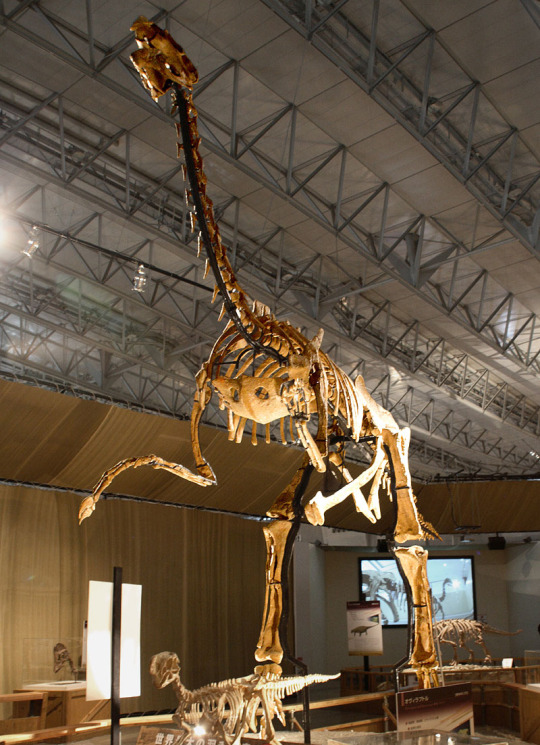
Gigantoraptor!
39 notes
·
View notes
Text

'When the first wisp of wind brushed across the land
Birds that yearned for the sky had wings
But no way to fly
They asked the Anemo God:
"How can we reach the heavens?"
To which the Anemo God replied:
"You have yet to find that which is most important"
As the God spoke, the wind thrust the seeds of a dandelion
High into the sky
The birds thrust out their wings
But the breeze was all too mild
Leaving them to stumble across the earth
So they went to the gorge
Where the wind showed off its wild and incomparable strength
They threw themselves off the cliff
And flapped their wings amongst the howling winds
Until they were able to fly freely in the sky
To the Anemo God they went, to gleefully say:
"We understand now! All we needed was a stronger wind to fly"
In reply the Anemo God said:
"What you lacked was not wind, but courage"
"It is courage that has allowed you to become the first flying birds of this world"'
--
A birthday gift for my friend @wander-yet-wonder depicting the fable of how the wind god Barbatos taught the first birds to fly. Happy birthday!
#genshin impact#barbatos#venti#dinosaur#dromaeosaur#avialan#bird#oviraptorosaur#microraptor#paleoart#some of the dinosaurs are meant to be specific species while others are more of a generic member of their family#there's a citipati and a velociraptor and a microraptor and an anchiornis in there among others
42 notes
·
View notes
Video
Anzu is a caenagnathid dinosaur genus from North Dakota, South Dakota, and Montana that lived during the Late Cretaceous period in what is now the Hell Creek Formation. Anzu wyliei is the type species and the only species known from several skeletons that maintain cranial and postcranial features.
#anzu#dinosaur#dinosaurs#dino#dinos#theropod#oviraptorosaur#hell creek#rocky mountain dinosaur resource center#museum#nature#paleontology#fossil#fossils
78 notes
·
View notes
Text
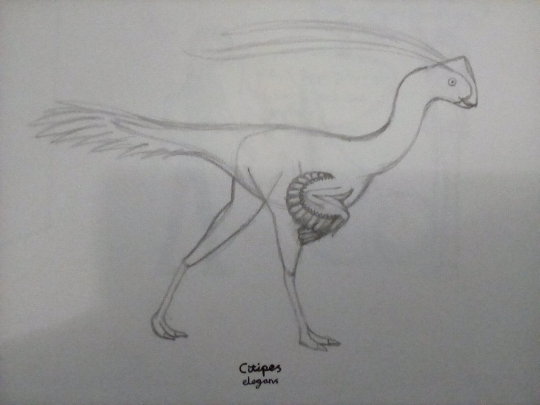
Old citipes drawing
6 notes
·
View notes
Text
COMMON DINOSAUROIDS OF THE OMNIVERSE
(NOTE: descriptions copy-pasted from DA where i normally/originally post my works. any context that is missing here on tumblr can be found on my DA [linked here and on pinned post] )
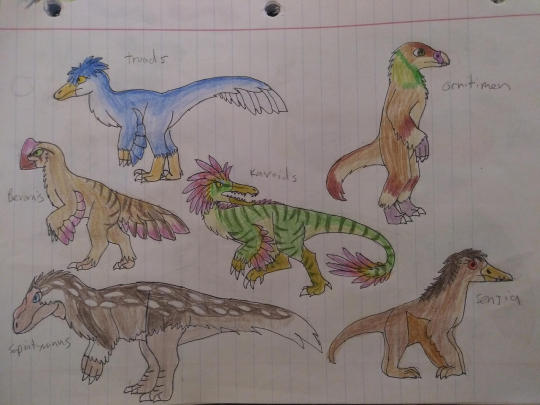
so, like, idk one day i was just in the mood for drawing some of every speculative evolutionist's favorite paleo-related topic. then I realized I had a bunch of dinosauroids I've create in my pre-strangeworld days, and though i'd redesign them as well. thus, all of these guys (except for the ornitimen) are basically just redesigns of mspaint drawing. so, here are a sample of the various sentient archosaurs you'll come across in the omniverse.
a thing to note is that usually all these guys would be wearing clothing or accessories of sort, but i omitted that so you could have a better look at their design.
[tumblr note: also, two of these guys will make mention of Reptilians, or at least this omniverse's version of it. the one linked here is my second rendition; i may end up doing a third rendition, or at least do some minor updates on their descriptions]
troods
troods are your pretty average troodontid-descendant dinosauroid, and they're more specifically a descendant of troodon itself. their universe is your usual non-kpg extinction timeline, though instead of the asteroid missing earth it hits mars instead. being 3ft at the hips, they don't look too far off from your average troodon, either, probably because their ancestors were already smart animal and only needed till the late Oligocene to evolve into a fully-fledge sophonts.
the trood's colors ranges between black, gray, silver and blue, and have darker topside which gradually becomes lighter towards the bottom. they also have a little poof of feathers on their head, which similar to us the females have it more fuller than the males. not much is known about their original culture, say for the fact they were between a hunter-gatherers and permanent civilizations.
ornitimen
contrast to the troods, ornitimen are'nt a naturally-evolved species, rather they're an uplifted sophont that's kinda a weird mix between different small ornithschian species (dryosaurus, kulindadromeus and hypsilophodon being some of the major contributors). they were created by the reptilians, initially being their servants. however, over the century they became less of servants and more of free beings. still, alot of their culture clings onto what they did as servants, especially the arts and labor.
ornitimens have different races, which were created for specific jobs. they stand between 2ft-4ft tall, with the smaller ones being used for art and delicate tasks and larger ones used for hard labor and transportation of items. their colors come in the varying shades, hues and markings of neutral colors, yet always have a colorful neck, which is most vibrant in males.
bevornis
bevornis comes from an alternate version on the trood's universe, in which instead of the troodons becoming the sophonts it was a species of oviraptor. unlike the troods, their initial culture is pretty well known for it's "No bullshit" kind of deal. most bevornids, even females and children, focused on their strength and ability to fight in battles. the children are taught from a young age how to fight and defend themselves. even as their culture expanded beyond battles and wars, they still are often proud of their physical strength.
bevornids look similar to other existing oviraptors, say for their more upright stance. the males have a magenta-ish color on their tail, arms and crest, while the females and children lack those colors. they're roughly the same size as a grown human, if not slightly more robust. their colors can vary depending on race and location, but for the most part it's usually slightly different shades of beige and blonde, still having the dark brown stripes on their face and rear end.
kavoids
kavoids look like one of those generic fantasy feathered dinosaur, with the green body and vibrant feathers. they're some kind of coelurosaur descendant, most likely a compsognathid or something similar. the come from an alternate early-cretaceous period from a small island continent, and they're culture is also a bit of a mystery aside from the fact that females are often more dominant than males.
kavoids stand 4ft at the hips, and are very lean and fast. they have varying hues of green with a yellowish underbelly and darker stripes. they have display feather not only on their tail and arms, but also their spine and head (which is more of a frill). these display feathers are very colorful and vibrant, and are an indicator of individuals and gender; females have their display feathers consist of warm colors, while the male's are more of cool colors.
sapiotyrannus
much like the ornitimen, the sapiotyrannus is an uplifted species created by the reptilians as heavy-labor servants before eventually becoming free beings. unlike the ornitimen, they're not a hybrid of various animals, rather they're a yutyrannus descendant given bigger, more dexterous hands. both sapiotyrannids and ornitimen tend share their civilizations together, since the ornitimen and expert farmers and the sapiotyrannids are vital guardians.
the sapiotyrannus is roughly the same size as it's yutyrannus cousins, and is covered almost entirely by feathers. they're always brownish in colors, with "faun"-like spots going down their back. they're very little difference between sexes, and the only real indicator is that females are slightly bigger than males.
senjias
senjias are the only ones here that aren't actually dinosaur, rather instead they're a descendant of rhamphorhynchoid pterosaur (possible kunpengopterus). coming from an island, they're mostly hunter-gatherers, foraging for both fruits and whatever the ocean gives them. they also go out to sea on little boats so they can fish for whatever they can find.
senjias aren't that big, only standing about 2ft tall. they not only have an opposable thumb, but also an opposable tail. they're also still capable of gliding, which is necessary since they live in the trees. all of them are solid shaded of brown, with a darker mane going on their back. females have red eyes, and males have blue eyes.
man, i need to make more of these guys sometimes.
#sophont#troodon#dinosauroid#pterosaur#sentient#troodontid#tyrannosaurus#feathered dinosaur#ornithischian#oviraptorosaur#tyrannosauridae#coelurosauria#speculative evolution#speculative biology#rhamphorhyncoidea#yutyrannus
2 notes
·
View notes
Text

A little traditional drawing of Oviraptor
Did this without a ref (I was using a small table and there wasn't really much space to put my phone down so I could pull up a reference) so there's definitely some mistakes lmao.
#art#my art#traditional art#pencil drawings#coloured pencils#paleoart#paleontology#palaeoblr#archosaurs#dinosaurs#theropods#coleurosaurs#maniraptorans#oviraptorosaurs#oviraptorids#oviraptor#queue
27 notes
·
View notes
Text
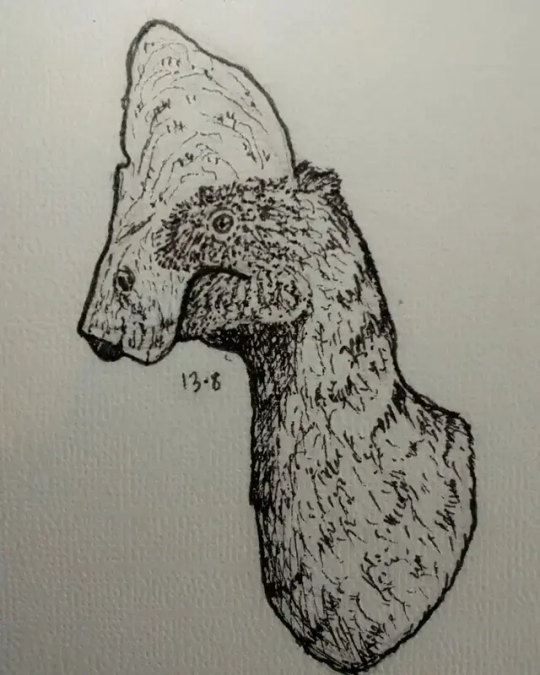

A quick 10 minute sketch of Chirostenotes. I like how it turned out, considering that this is my first oviraptorid.
17 notes
·
View notes
Note
Just saw ur vulture post. Could a dinosaur have a crown like a chicken? If so, which ones are most likely to have this feature?
I feel like chicken combs are one of those things that's so normal to us because we're familiar with chickens that we don't appreciate how wacky looking it is, like this animal's entire face gets turned into a massive billboard of red skin flaps.

As far as I'm aware there's no underlying bone structure that correlates to chickens' combs, so if an extinct dinosaur did have one we wouldn't see it in the fossil record unless it was exceptionally well preserved. That being said, there are a few guidelines that can help make some generally arm-wavey guesses about what may or may not have had them!
For predator species I'd say large brightly coloured billboards on the face are fairly unlikely since across most land vertebrates predators tend to prioritise stealth and blending in. I don't know for sure, but I would guess that more carrion-eating vultures have adornment because they don't need to stay hidden from their food, cause it's, y'know. dead.
Dromaeosaurs are generally though to be predators, although like most predators they probably incorporated scavenging into their feeding patterns and we don't know whether there were any species that specialised as carrion eaters! I have drawn dromaeosaurs with combs or crests before, and I definitely don't think it's an impossible suggestion, but I think it's most reasonable to give them muted colours like with this Saurornitholestes:
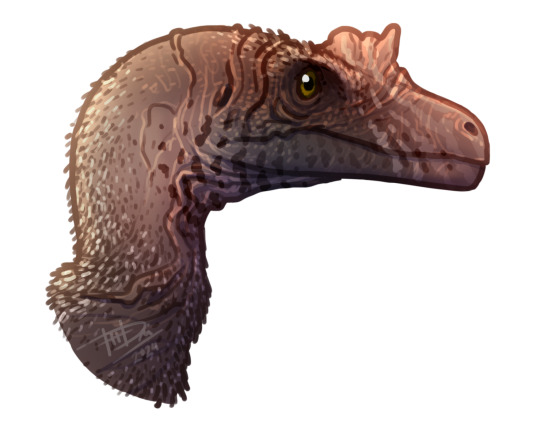
I would guess that smaller omnivorous or herbivorous maniraptorans like oviraptorosaurs or small ground birds are more likely candidates to have flashy skin on their faces, although large oviraptorosaurs with bony crests probably didn't also have a comb on top of that.
Something like Avimimus, which was a small oviraptorosaur that likely lived in groups according to a bonebed of at least ten individuals together. Something like a colourful comb or wattles on these guys could be used for social signalling or species recognition:

As far as I'm aware there's next to no skin data for small ornithischians like heterodontosaurids and ornithopods aside from the funky Kulindadromeus scales, but being small, mostly herbivorous, probably quite social animals I can see an evolutionary benefit to bright signalling structures! Alongside oviraptorosaurs, I think small ornithischians like Manidens here are probably the best non-avian analogue to modern ground fowl that have these kinda of wacky skin structures:
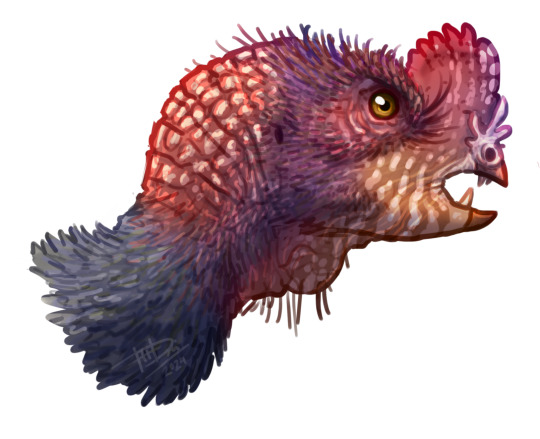
So overall. Yeah I think there's potential that Mesozoic dinosaurs could have had a chickenlike comb! Like with modern fowl, it would have evolutionary value to small social species as a display structure, but tradeoffs like being more visible to predators/prey would definitely be in play here.
I mean obviously the tradeoff is worth it in some cases since we get creatures like this walking around on this earth:

Basically my message with all this is like. When doing palaeoart look into what areas are open to speculation, then think about what factors might constrain those!
706 notes
·
View notes
Text
Eoneophron infernalis Atkins-Weltman et al., 2024 (new genus and species)

(Tibiotarsus [fused shin and ankle bones] of Eoneophron infernalis, from Atkins-Weltman et al., 2024)
Meaning of name: Eoneophron = dawn [in Greek] Neophron [genus of the extant Egyptian vulture, sometimes called the "Pharaoh's chicken"]; infernalis = from Hell [in Latin]
Age: Late Cretaceous (Maastrichtian)
Where found: Hell Creek Formation, South Dakota, U.S.A.
How much is known: A partial right hindlimb.
Notes: Eoneophron was an oviraptorosaur, a group of bird-like theropods with short and often toothless skulls. The only other oviraptorosaur that had previously been named from the Hell Creek Formation was the much larger Anzu, which is estimated as having weighed between 200–350 kg. The type specimen of Eoneophron, on the other hand, is thought to have weighed around 78 kg. However, the microscopic structure of its bones indicates that it was close to fully grown when it died, suggesting that it is not a juvenile specimen of Anzu. Eoneophron is also unusual in that two of its ankle bones were fused to its tibia (shin bone); among oviraptorosaurs, this feature is otherwise known only in Avimimus from the Late Cretaceous of Central Asia.
Reference: Atkins-Weltman, K.L., D.J. Simon, H.N. Woodward, G.F. Funston, and E. Snively. 2024. A new oviraptorosaur (Dinosauria: Theropoda) from the end-Maastrichtian Hell Creek Formation of North America. PLoS ONE 19: e0294901. doi: 10.1371/journal.pone.0294901
97 notes
·
View notes
Text

'Yum yum yum yum I sure do love Egg'
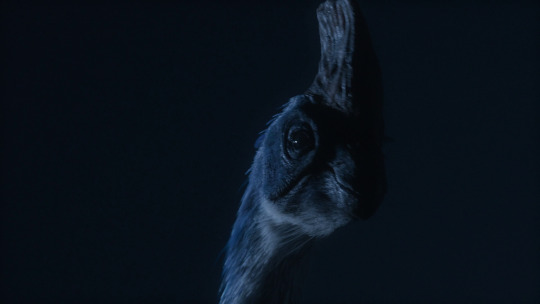

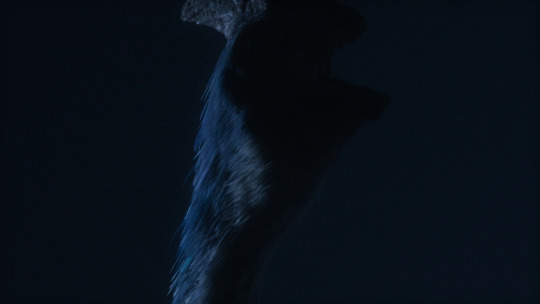
'HONK HONK HONK HONK!'

'Buffet's closing, better take one for the kids.'

*flappy chase scene*
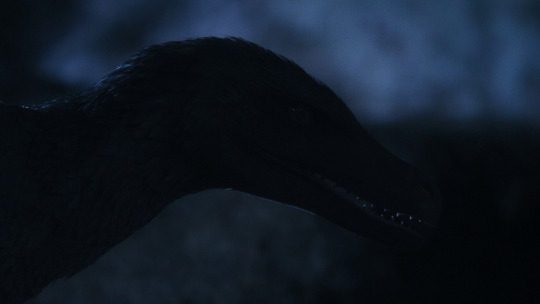
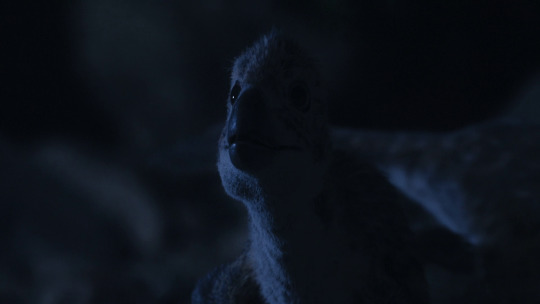
"Kids, this is Egg, one of the most popular forms of child to eat."

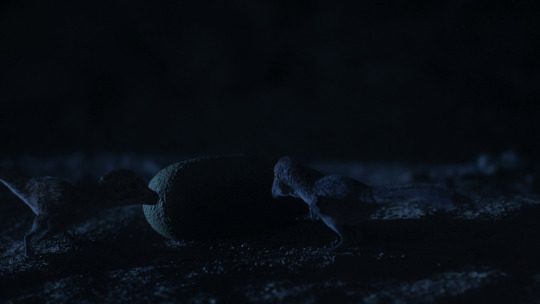

'Egg? Egg? Egg? Egg?'

'Egg!'
#corythoraptor#dromaeosaur#theropod#dinosaur#cretaceous#oviraptorosaur#prehistoric planet#kuru kulla
272 notes
·
View notes
Note
Trick or treat!!!

Caudipteryx!
31 notes
·
View notes
Text
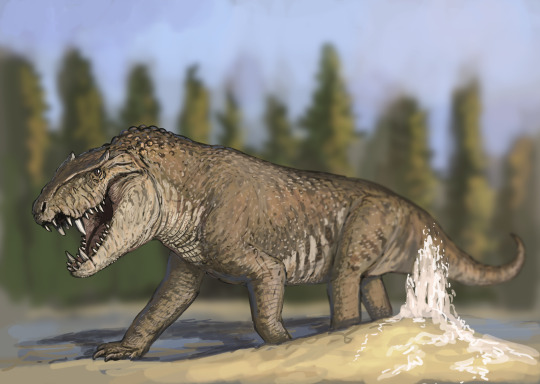
Results from the 65 redesign #paleostream.
Starting of with the stuff you are dreaded/waited for: the Quadrex, a 8 m long peirosaurid. Slight spoilers ahead in the images below.
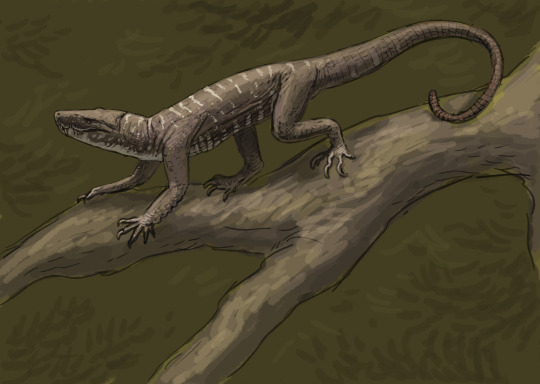


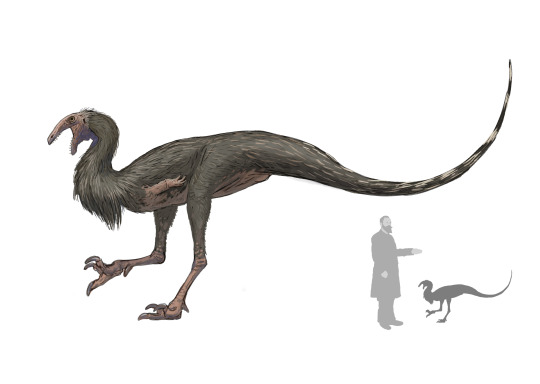
Next you see here a "long boy", an arboreal baurosuchine, the "anky-raptor" actually a Jakapil relative (only a juvenile appears in the movie), cave-dwelling oviraptorosaur and a noasaurid as a stand-in for the troodon/compies (?)
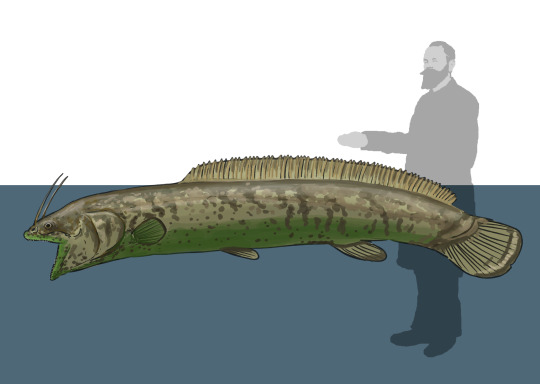
Last thing we did was an animal that isn't even fully visible in the movie, there is something long, spiky and fish, and what you see in the trailer is everything you see of it. We fleshed it out as a long and massive bowfin
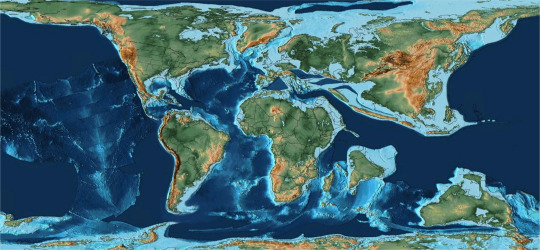
Important detail here: the scenario we imagined for this stream is that, it is an alternative timeline in which South America is closer to North America so that a limited faunal interchange is already possible. Also the asteroid came down 1 million years later ;)
#65#65 movie#redesign#cretaceous#creature#quadrex#paleoart#speculation#specevo#speculative evolution#horror#paleostream#palaeoblr
318 notes
·
View notes
Text
Spectember D8: Artificial selection

66 million years ago an extraterrestrial object landed on earth… not collided… landed.
It was itself artificial in nature, intelligent, very large and ready to prepare this world for occupants that were never going to come here, this machine was throw by an already extinct civilization that was colonizing the galaxy millions of years ago, leaving these behemoth terraforming drones that readjust the biosphere of a whole planet to be turned into a Arcology structured Ecumenopolis which can let them colonize the new alien planet. The artificial construct is not high intelligent, is more automatic than anything so this would only keep going for what was programmed without the ability to learn anything more of what it needs to maintain the global Arcological cities on the end cretaceous earth, even if it remains millions of years on the same task, following the same protocols and only adapting to an extend.
This has turned the history of earth into a new age, one where a civilization formed without its residents, now affecting the biosphere of the late cretaceous earth and carrying it into a strange new period, this causing a transformation on ways that benefited the survival of no avian dinosaurs and other animals and plants that could have perished if the asteroid collided as this whole system would protect them of the asteroid impact as part of its protocol of preservation. However, the existence of this artificial being would shape that fauna in ways that only could rival to changes made by geological and climate events, the machine would focus its goal on trying to adjust the animals that now live inside the cities to regulate their impact.
On what would be called reserves formed a more fragmentary ecosystems, pockets and islands between cities they are the most natural place on earth, they would see the evolution and extinction of new animals, meanwhile inside cities, there has been two trends: either these animals just adapt to the urbanized the environment remaining almost like their reserve relatives or the machine has modified the animals that tried to pass or live there to accommodate into specific tasks that benefit the infrastructure, indirectly domesticating them by artificial means and indirectly modifying their genes at long term by breeding, though these domesticated fauna sometimes would became extinct for a unexpected catastrophic event or are replaced by another group that the same global machine reshaped into a similar niche. Herbivores that feed on gardens and maintain them clean, predators that hunt animal plagues and balance the population of the other non-domesticated fauna, scavengers that keep streets clean from other animal remains. Although this machine has an army of small drones and systems that self-clean and maintain the cities, it didn’t stop to create its urban ecology to keep everything in check outside of the synthetic drone hands.
With all of this, it was possible that if there was not sentient species going to colonize this new earth, properly a sapient one would evolve inside the cities? Would even the machine would welcome its rise? In sort of way… it happened, but not in the way you could expect.
After 66 million years of constant modifications of these urban ecosystems, and jut since 6 million years ago a unique theropod species evolved, this is the Mockery folk (Scoptosapienoides), derived from a branch of oviraptorosaurs that evolved to hunt down perching animals on the tall building, it lives in these mega cities built and mean to host the long gone alien colonizers, and these theropods are capable of use the shelters with their rooms and beds, and sitting places to rest; these can go away from their specific home to “work” in hunting down the small animals that invaded the gardens of the tall buildings, often taking the transports, they can walk around streets too but they are taking the advantage of these special “elevators” to avoid wasting energy. They work out a whole day on their hunt, in a way this was their whole reward, a good hunt to eat food; they reach up their main homes to rest on the night, they are able to recognize their own houses, marks on them or simply by memory; they normally live solitary unless they establish a monogamous pair with a member of the opposite sex, which can nest and then raise their young in one single shelter until they reach age adult, at that point the monogamous couple separates and lives their lives as before, usually in a span period of more than 5 years; the mockery folk lives accommodated and in the case some of these get sick, old or crippled, these are cared properly if needed by the machine system.
Populations are largely limited to tall building apartments, normally only moving away when population overgrow the shelter amount or if one of the couples of the original family or the children leave and there is no way to properly way to establish a home nearby, normally remains homeless for days or week until they are guided by the machine to a new available building to live.
Their lives are easy, sustained by their hunting an interactive activity outside they can relax and sleep mostly in their shelters, the machine maintains its basic necessities including cleaning of these homes; the machine identifies these as residents of the buildings rather than animals, both collaborating and receiving the actions done, which the machine interprets as sentience acting, but is not, these animals are barely grasping a intelligence higher than a 4 year old human, they are as smart as a parrot and the majority of actions correspond to instinct and beneficial gain, and has been for the last 6 million years without really much advancement except more skill in using the systems of these cities.
The machine itself created them nudging its behavior, a product of mutual improvement and accommodation that produced at the end animals that could fill up a niche other organism couldn't fit, the one of the colonizers, to an extent of course because the machine itself is not capable of uplift these creatures, just to fulfill their needs and the mockery folk corresponds this for their own advantage, but not developed further for the mundane and dull life they obtained.
They became domesticated “people” which took the activities and tasks sapient beings were supposed to do, doing things they were planned to accommodate these unknown creators, though not fully guided by consciousness, they cannot understand why they can live in homes, or how these systems work, they cannot use things above simple color panels which they can touch with their derived finger in order to do an action, they cannot gather information or have a language, or history, they just live and die. There is no way to know if something might help them to evolve of being accommodate being in this artificial world, and the machine is likely not going to push this animal, just to let them live a sort of luxurious life until they all die out like with many other species.
#speculative evolution#spectember#alternative evolution#non kpg#theropoda#oviraptorosauria#Domestication
73 notes
·
View notes
Text
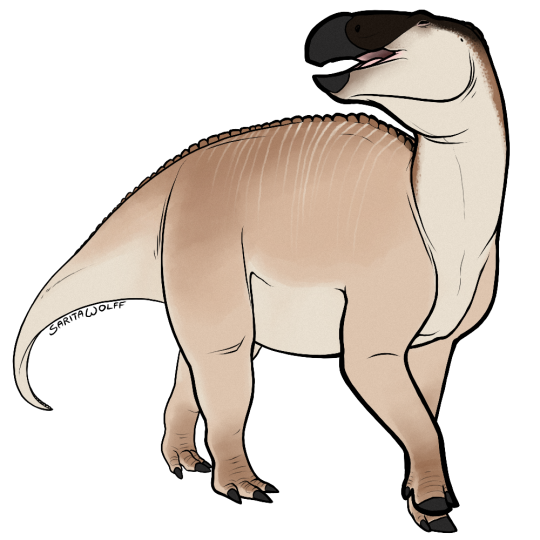
#Archovember Day 16 - Shantungosaurus giganteus
While hadrosaurs tend to be perceived as horse or cow-size, there were some intimidatingly huge members of the family. As the largest hadrosaur discovered so far, Shantungosaurus giganteus could reach 15 metres (49 ft) to 16.6 metres (54 ft) long and weigh an estimated 13 metric tons (14 short tons) to 16 metric tons (18 short tons). It lived in Late Cretaceous China, and would have filled a niche typically filled by sauropods in its ecosystem. As these dinosaurs have been found in a mass grave, it’s likely they also traveled in large, formidable herds. Shantungosaurus also had very large nostril holes which were probably covered by flaps of skin that could have inflated to amplify its calls.

Shantungosaurus lived alongside other hadrosaurs like Laiyangosaurus, Tanius, and Tsintaosaurus, all quite large animals but still overshadowed by Shantungosaurus. It would have also lived alongside a diverse array of ceratopsians like Sinoceratops, Ischioceratops, Zhuchengceratops, and Micropachycephalosaurus, as well as the ankylosaur Pinacosaurus and the oviraptorosaur Anomalipes. So far, only one sauropod has been found in this area, Zhuchengtitan, the tallest animal in its ecosystem… beating Shantungosaurus by a neck. The apex predator of this region was the tyrannosaur Zhuchengtyrannus. However, it’s likely would not have been able to take on an adult Shantungosaurus, but could have picked off young or sick individuals that strayed from the herd.
#my art#SaritaDrawsPalaeo#Shantungosaurus giganteus#Shantungosaurus#edmontosaur#hadrosaurs#hadrosaurids#ornithopods#ornithischians#dinosaurs#archosaurs#archosauromorphs#reptiles#Archovember#Archovember2023
34 notes
·
View notes
Text
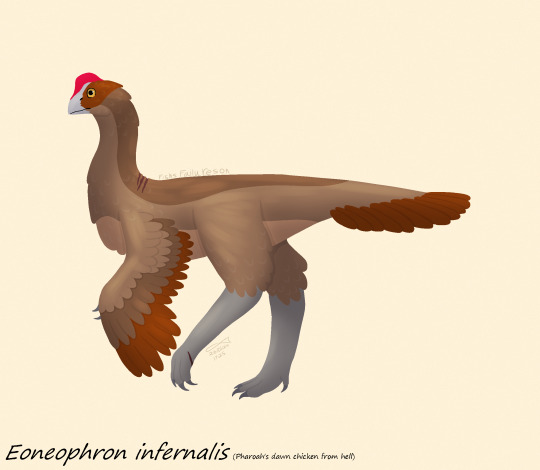
New dinosaur just dropped
#art#my art#digital art#paleoart#paleontology#palaeoblr#archosaurs#dinosaurs#theropods#coleurosaurs#maniraptorans#oviraptorosaurs#caegnathids#eoneophron#queue
48 notes
·
View notes